Few Galanthus species are as poorly known, either in the wild or in cultivation, as G. cilicicus, although it was described as long ago as 1897, based on plants collected in the Cilician Taurus mountains by W. Siehe. Plants were introduced into cultivation by Ole Sønderhousen in the 1970s and, until recently, this collection was the basis of most of what was known about the plant’s morphology in life.
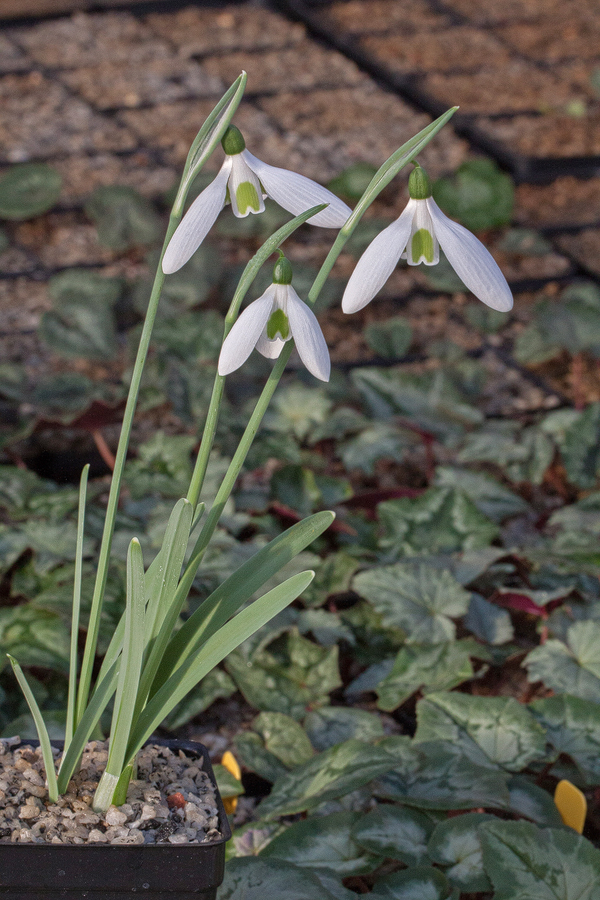
An interesting recent paper* comparing and contrasting G. cilicicus and its closest relative, G. peshmenii summarised the results of extensive fieldwork and concluded that G. cilicicus is very rare in the wild, having been recorded only from a handful of sites near Mersin. Since all these sites are near a single road, from Mersin to Arslanköy, I am sceptical as to how much can be concluded about the plant’s distribution in more inaccessible sites in this rugged terrain, in which going off-piste is difficult and time-consuming. The plant does appear to have an exceedingly small geographical range, much more restricted even than G. peshmenii.

It is clear from recent molecular phylogenetic studies that G. cilicicus is closely related to G. peshmenii and, slightly more distantly, to G. elwesii**. Morphologically, however, it is very clearly distinct from its closest relative, in ways described in detail below. The paper cited above also announced the interesting discovery that G. cilicicus is apparently triploid (2n = 36), whereas G. peshmenii is diploid, with the same chromosome count as most snowdrop species of 2n = 24. Taken together with the 500km separation between the closest known populations of the two species, these differences put beyond reasonable doubt the validity of G. cilicicus as a good species.
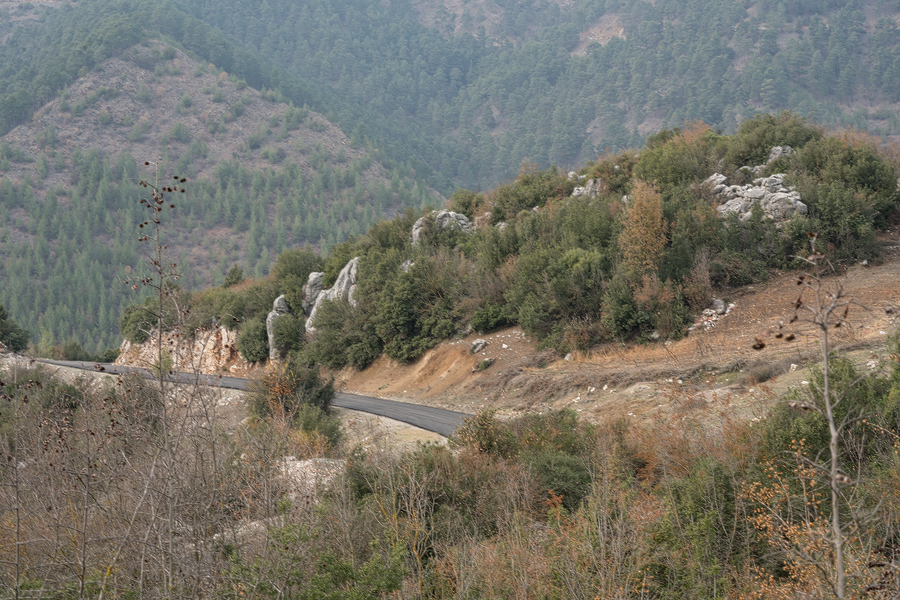
The foothills of the Cilician Taurus mountains behind Mersin experience mild winters and hot summers. I saw orchards of peach trees up to an elevation of 800m and olive and citrus groves that stopped not much lower down. The mountains are limestone, weathered into deeply dissected rocks, crags and cliffs, with fissures of varying depths making travel away from paths very difficult. The entire area outside of enclosed orchards is heavily grazed by goats and the remaining vegetation is dominated by evergreen oak (Quercus coccifera), a pricklier version of holly, entwined with the viciously thorny Smilax aspera and brambles. This is the sort of habitat to which field botanists will be consigned when in purgatory, so unpleasant is it to move about in.
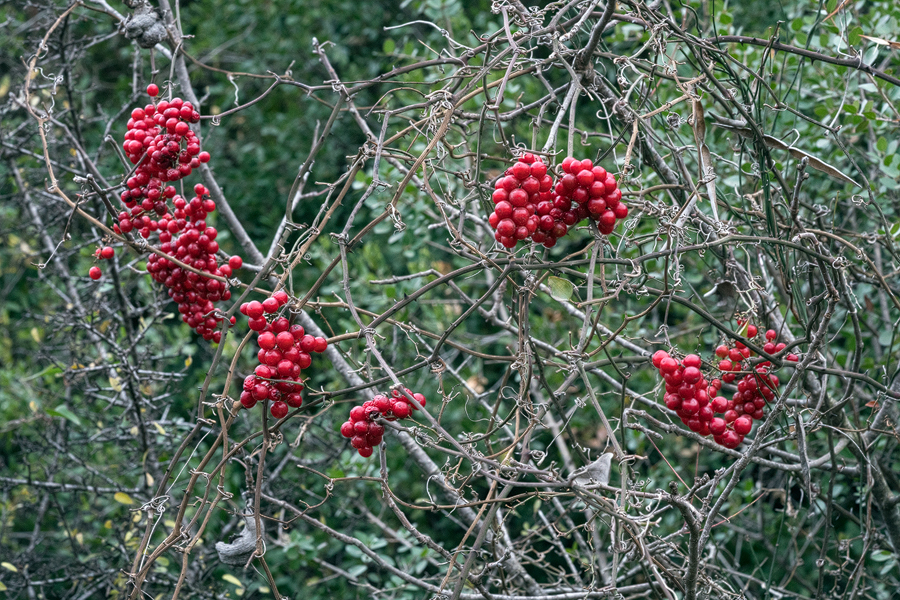
It looks about as unlikely as place as you can imagine in which to see snowdrops and, when I found the first of two populations I encountered, I believe a strangled yelp of surprise and joy escaped my lips. I may even have danced a little jig. This small population was growing in crevices in the limestone, under the prickly oaks. Had I not happened to stop and scan the rock face using binoculars, and seen the single flower visible from the road, I would certainly have missed it. The population was confined to one part of the west-facing side of an outcropping of rock between the road and a farm and probably comprised fewer than 100 plants in total.
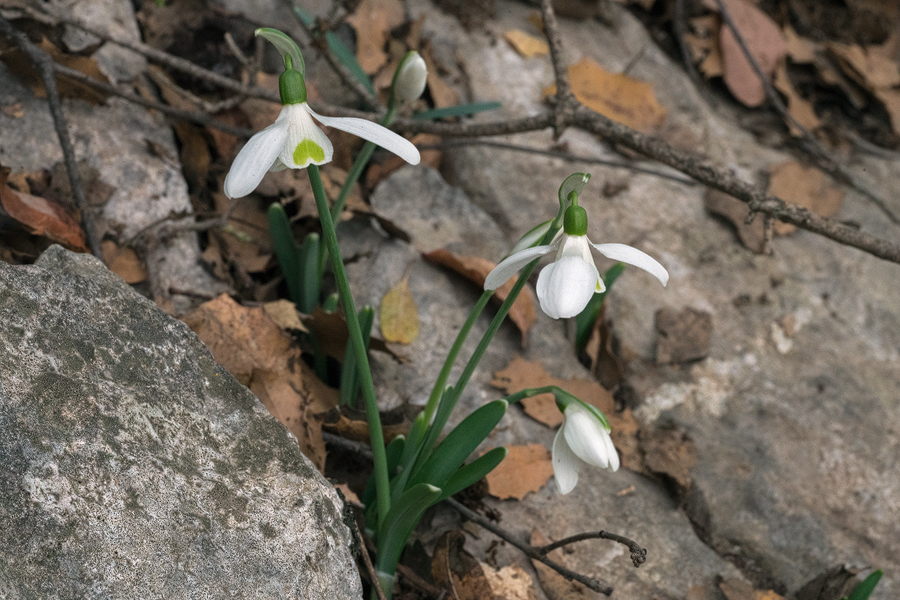
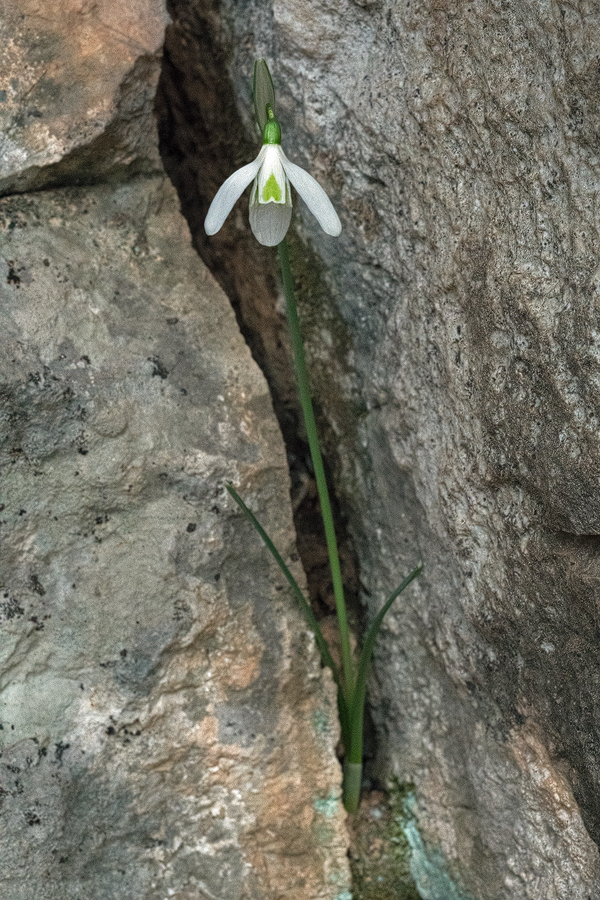
Later in the day I found another, much larger population, also beside the road, in which snowdrops were growing on both west and east-facing cliffs, but more abundantly on the former. This is odd behaviour for a snowdrop and quite unlike G. peshmenii, which seems to grow exclusively on permanently-shaded north-facing rocks and steep slopes.
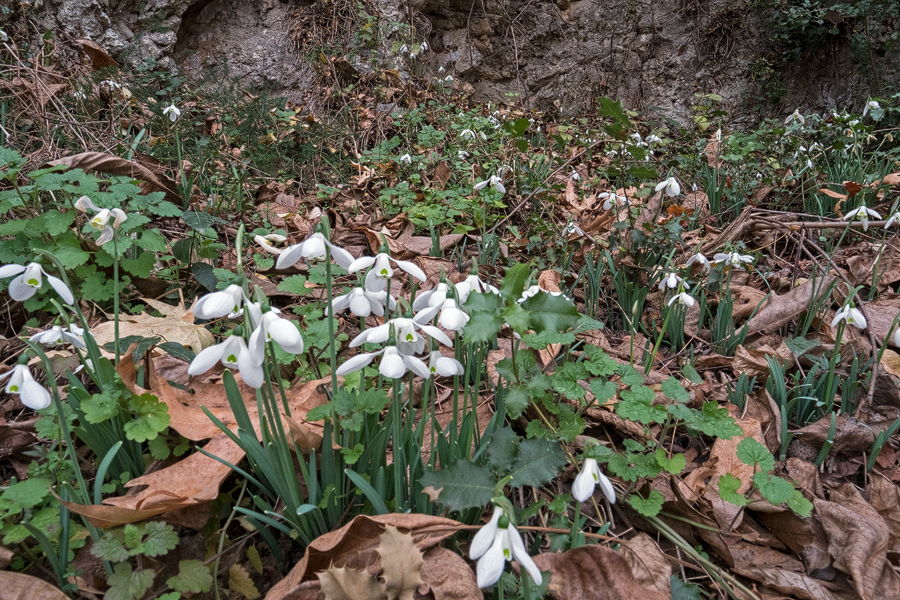
The snowdrops were, admittedly, often growing deep in fissures between rocks and heavily shaded, both by the rock and the evergreen shrubs, but these sites must nevertheless get extraordinarily hot in the height of summer. Some of the most vigorous plants were growing in exposed sites on the rock face.
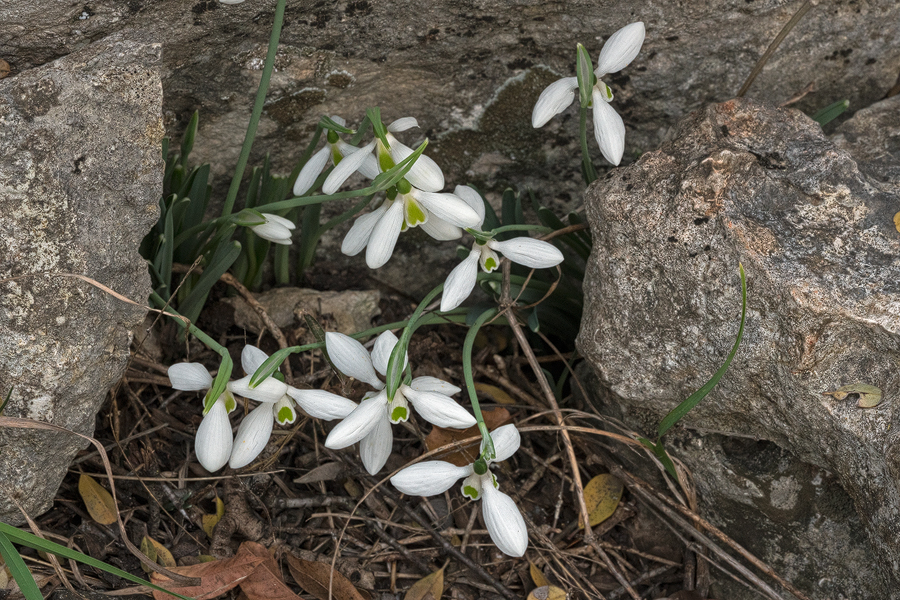

Growing with the Galanthus was Cyclamen cilicium, a few late ones still flowering. Also Arisarum vulgare and an Arum species. Uncommon, but coming into flower, was an attractively-scented Daphne species.
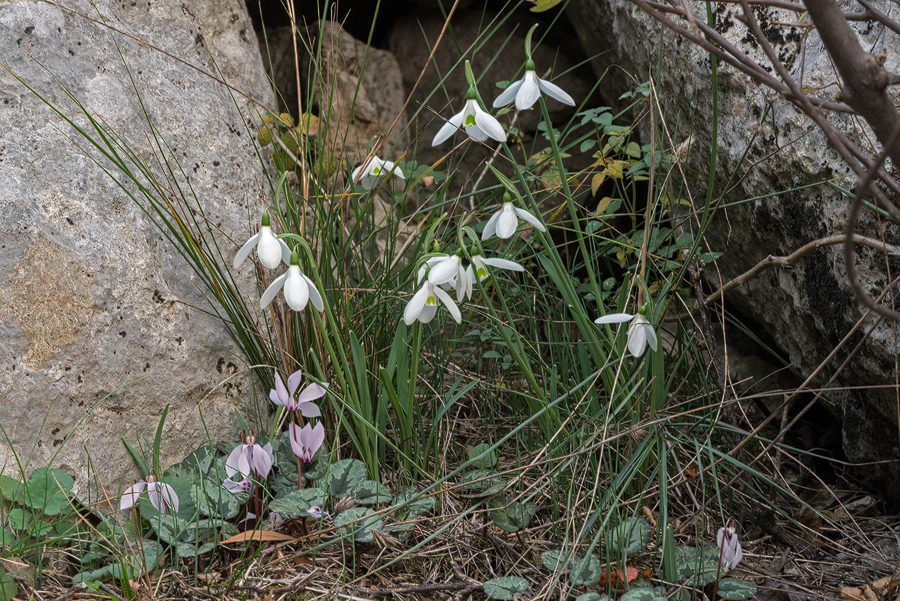

In stature, G. cilicicus is a small snowdrop. The shortest scapes were less than 10cm tall and the longest only 20cm. The flowers were extremely variable in size. The outer segments of the smallest individuals were less than a centimetre long, whereas the largest were three centimetres. The impression created by the most striking clones was of large, elegant flowers on neat, compact clumps, with a spray of glaucous leaves at the base. The best were exceedingly beautiful, as I hope the accompanying photographs illustrate.
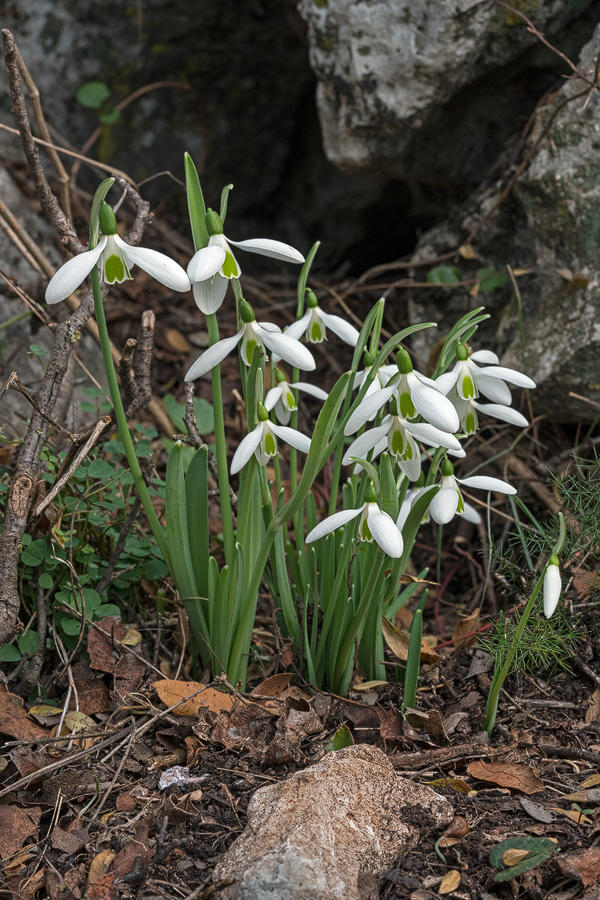
On the subject of leaves, they were present in all cases, though developed to different degrees on different clones. In a few cases, the leaves were only two or three centimetres long but typically the tips of the leaves had reached between a third and a half of the full height of the plant. Vernation was clearly applanate and the margins were flat, whereas in G. peshmenii they are often slightly revolute at the bases. The leaves were clearly glaucous, less ambiguously so than G. peshmenii, and they lacked the pale median stripe usually present on the upper surface of the latter species’ leaves. The tips of the leaves were also often slightly hooded, whereas in G. peshmenii they are flat.
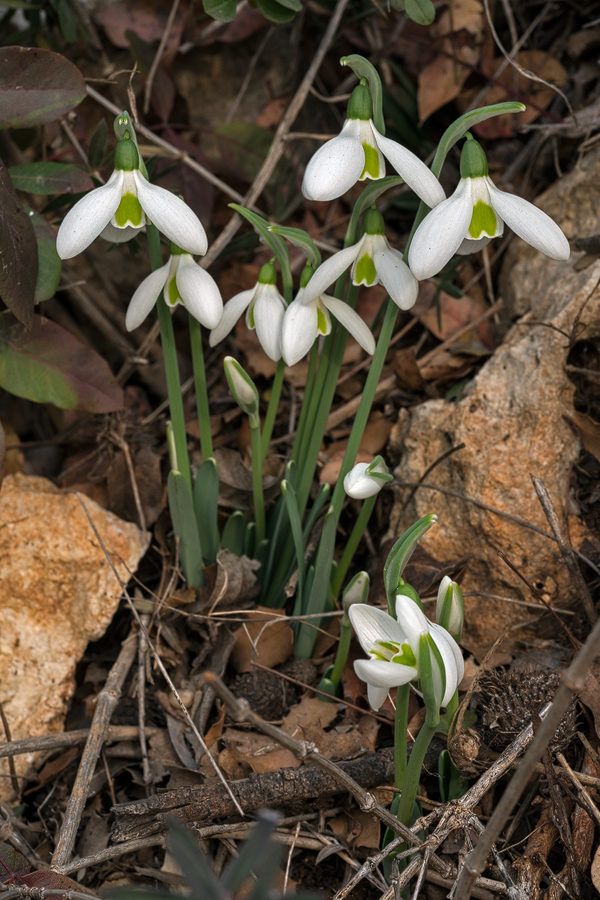
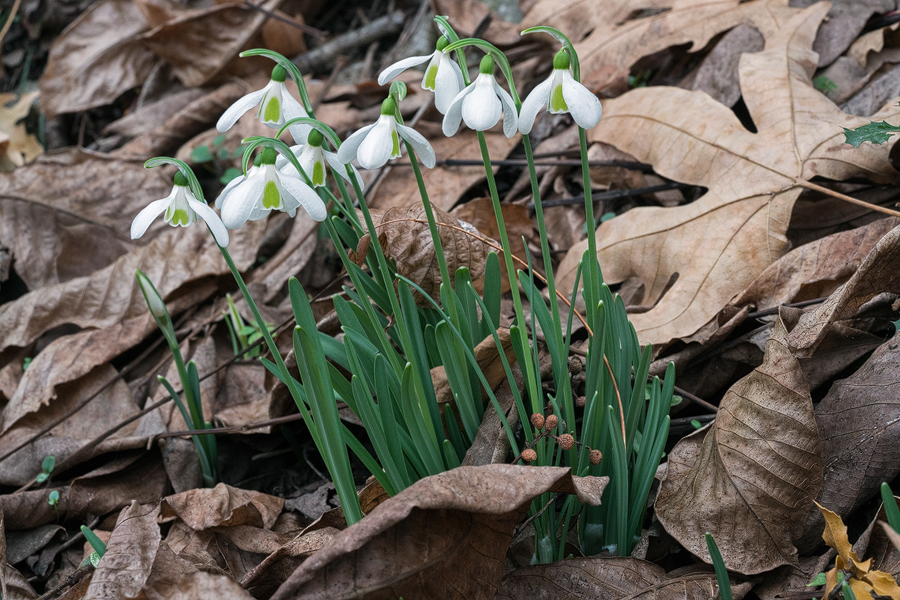
Yüzbaşioğlu et al. (2013) state that G. cilicicus has wider leaves than G. peshmenii, and they were the ones taking systematic measurements, so I’m not going to argue. I was struck, however, by how narrow were the leaves of some clones of G. cilicicus – no more than two millimetres, which is narrower than any G. peshmenii leaves I recall noticing.
At any rate, the combination of lack of median stripe, hooded tips and extensive leaf development at flowering time make it difficult to confuse G. cilicicus with G. peshmenii, even on casual inspection.
The larger of the two populations I explored was at an elevation of 395m and it was in full flower. Some plants were still in bud and a few had already finished flowering. The smaller population was at 620m and it was only just beginning to flower. Yüzbaşioğlu et al. (2013) refer to a population at an elevation of 890m near the village of Yeniköy, flowering in mid January. I could not find it and it is possible that it was not yet in flower. The evidence, based as it is on only two populations, is flimsy but it seems that G. cilicicus flowers earlier at lower elevations, the opposite of the situation with G. peshmenii.
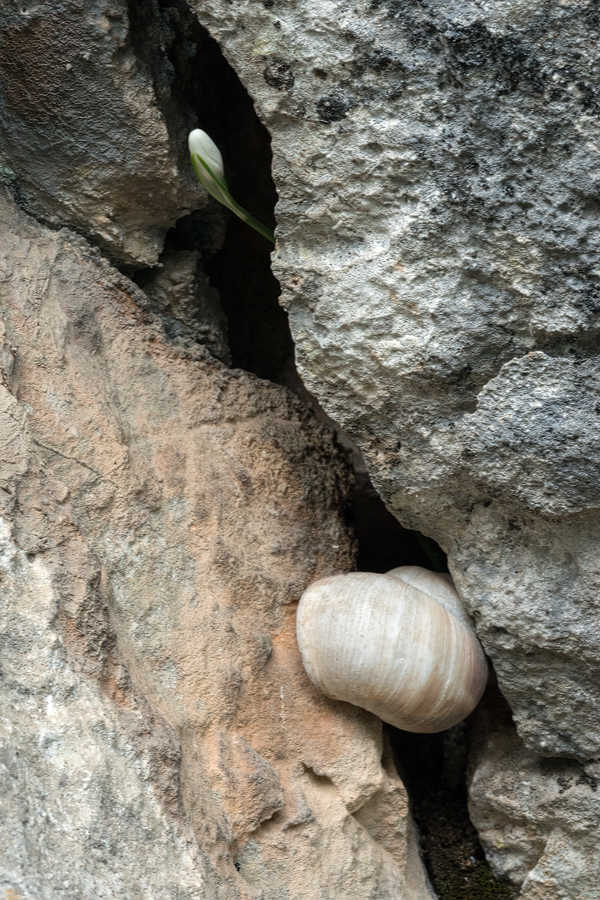
The flowers of G. cilicicus were typically in the shape of an elegant pear, with a tapering neck and an expanded base. The claws were moderately short and expanded quite abruptly into the main part of the outer segments, which were deeply concave, with a bowed ‘keel’. The margins of the outer segments were flared in many cases and, in this respect, resembled G. elwesii var. monostictus.

A few individuals had a seersucker texture, somewhat reminiscent of the cultivar Galanthus plicatus ‘Diggory’.

Some flowers had short claws and broad segments, others long claws and narrow segments.
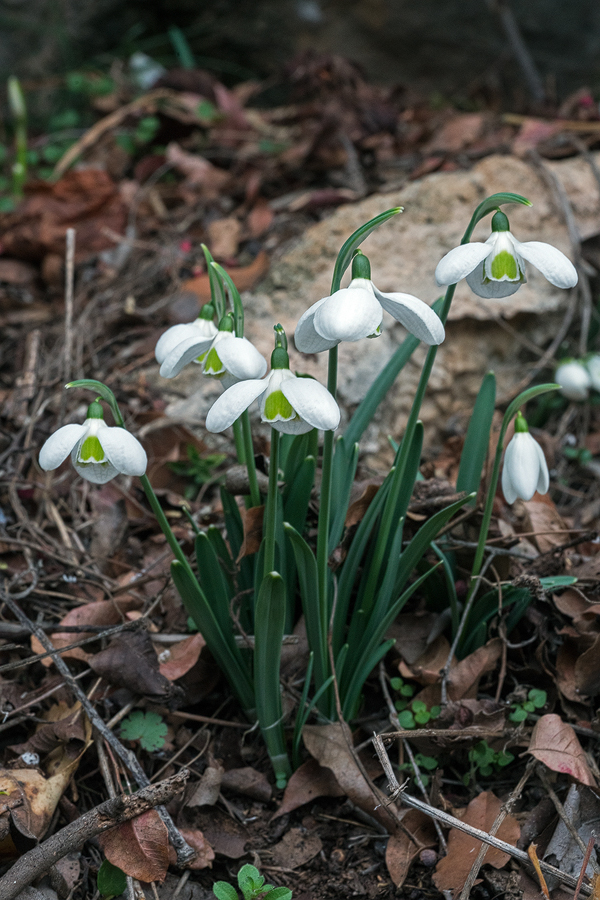
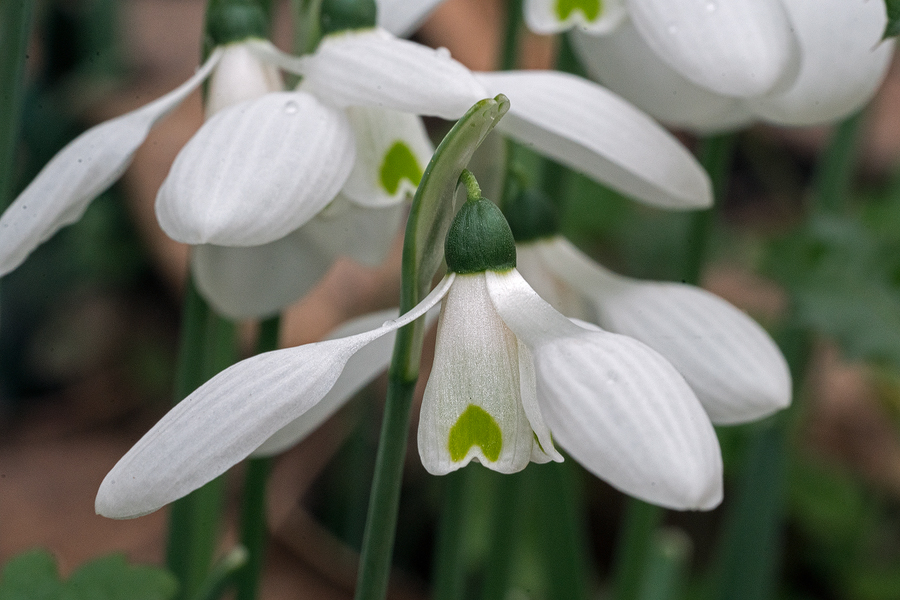
Quite a few plants in the larger of the two populations I saw had markings of varying intensities, shades and patterns of green on the outer segments. Intriguingly, these green markings tended to be towards the middle of the outer segment, rather than towards the tips, as is commoner in other snowdrop species. There were exceptions, of course!
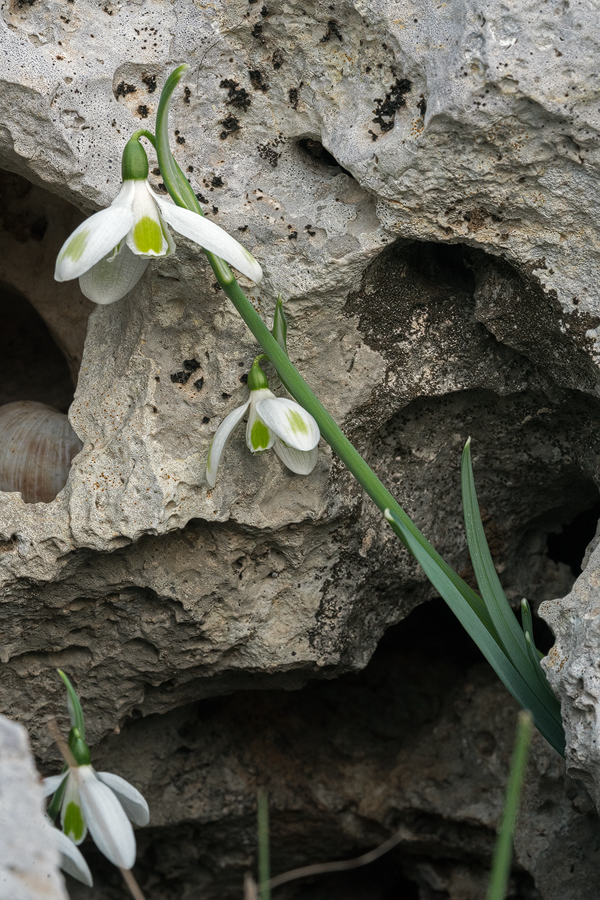
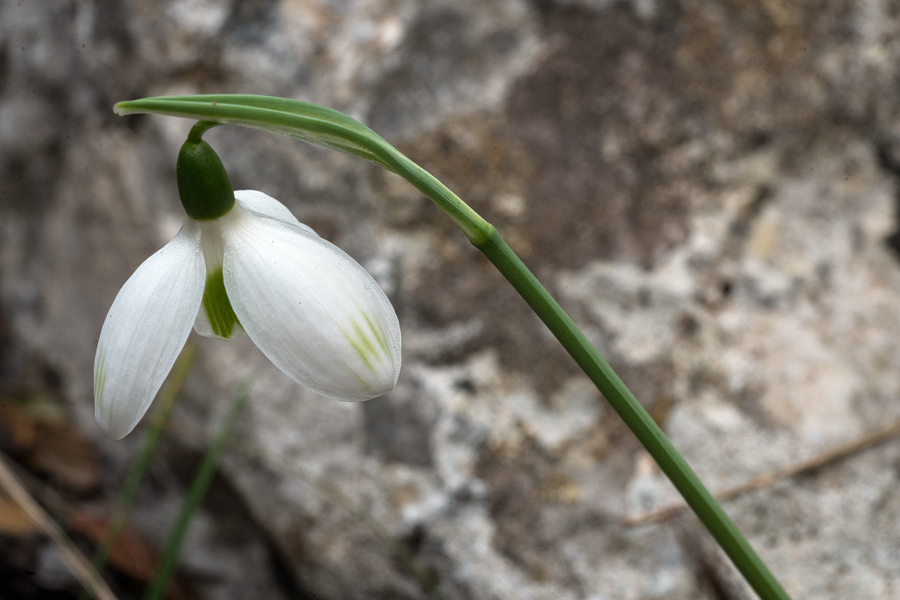
One such spectacular clump grew from a deep pocket on the exposed rock face and, in the limestone rubble beneath it were several distinct ‘green outer’ individuals, all presumably seedlings of the large parent clump.
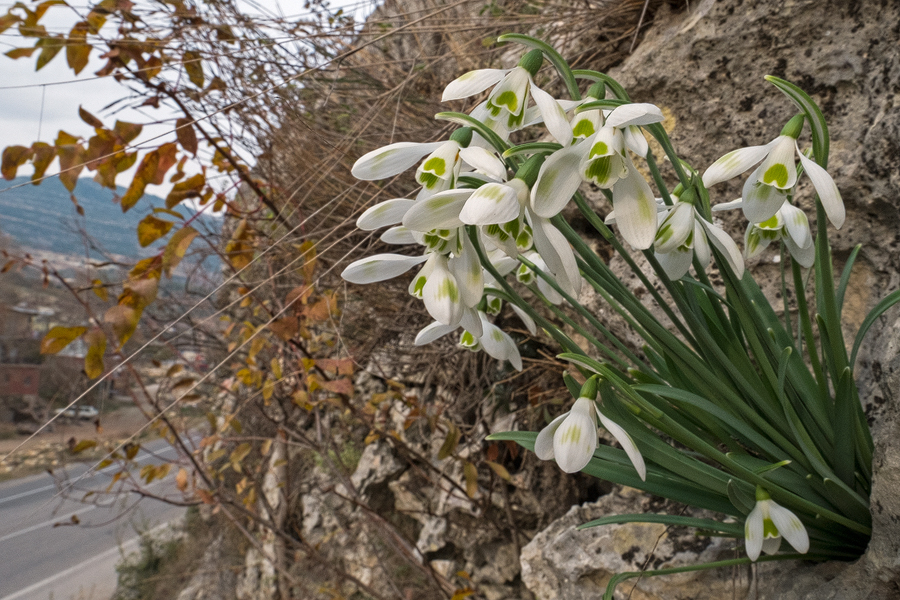
A single clone (that I saw) had four perfect outer and inner segments.
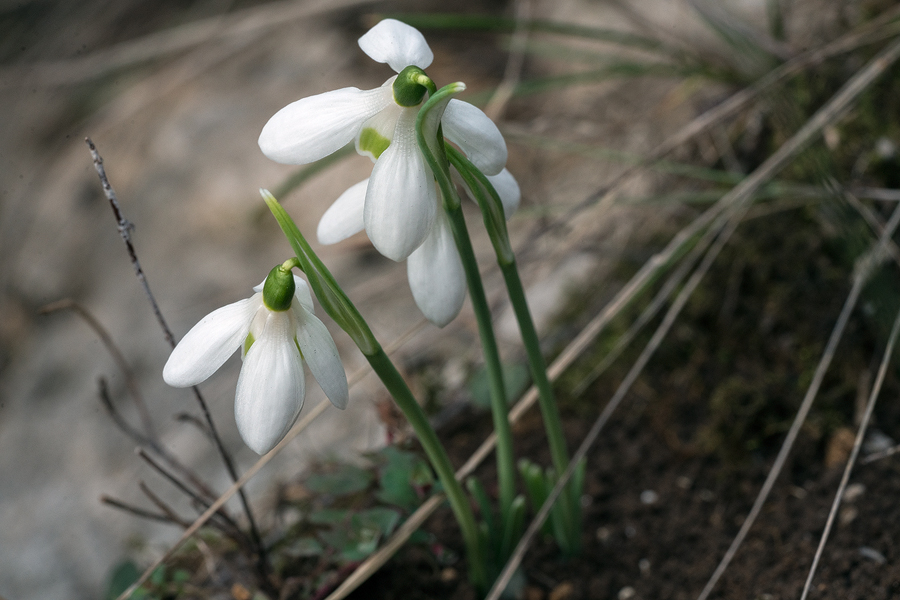
The inner segments were roughly triangular, widest at the apex, which was typically slightly flared. A striking feature of almost all the plants that I saw was that the sinus was tiny, in some cases almost absent. This feature is another fairly reliable way of distinguishing this species from G. peshmenii though, as in every other trait, this one is variable and there is no doubt overlap between species.
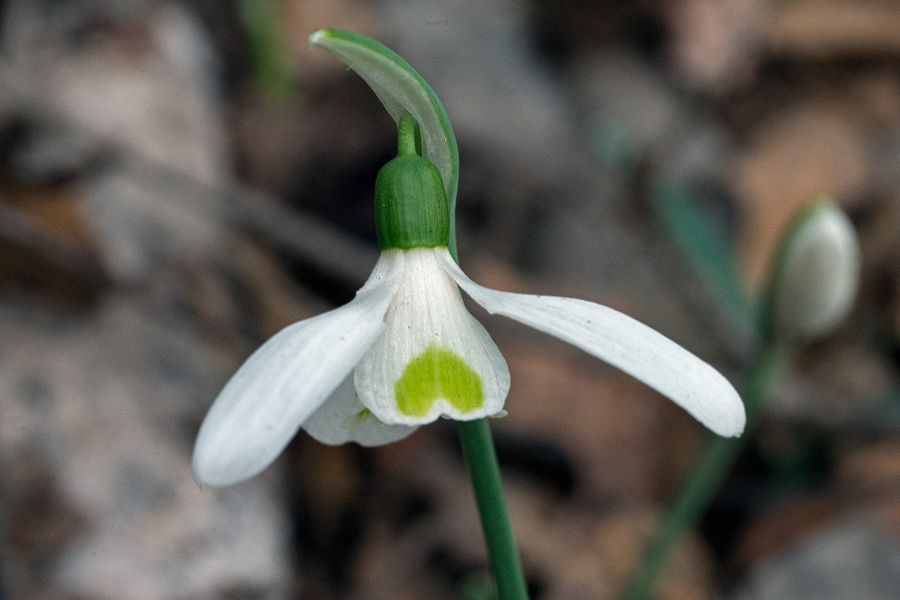
There was a single green mark at the apex of the inner segments, which typically covered at least a third of the segment and in many cases a half or more. The mark was typically roughly in the shape of an inverted heart, often with a marked point, ‘aimed’ at the base of the segment. In a few cases the mark was reduced in size and in a few it covered almost the entire segment.
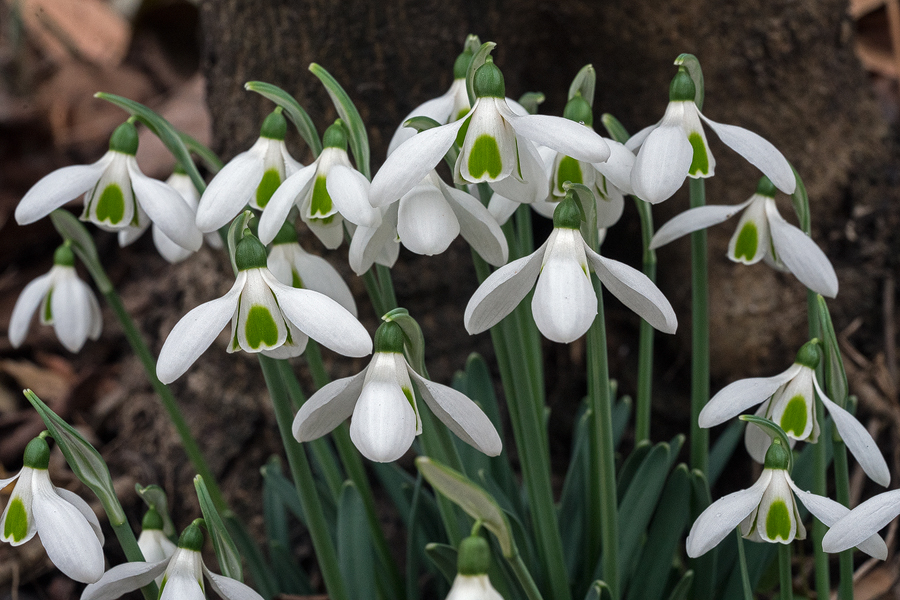
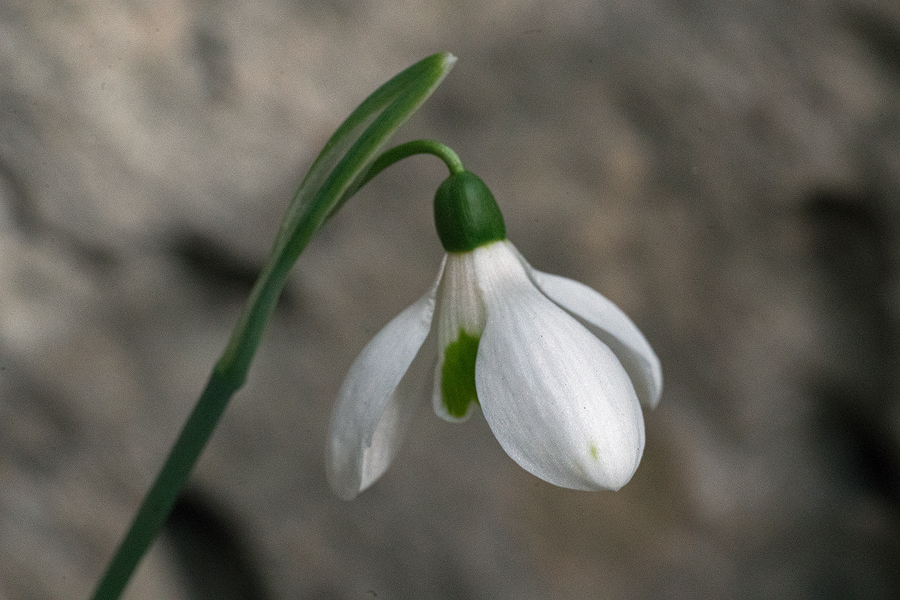
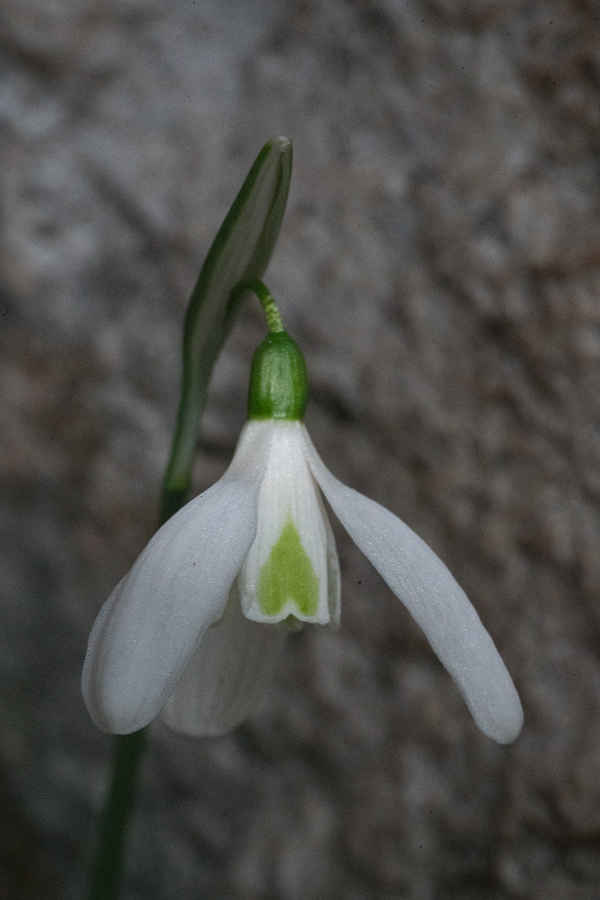

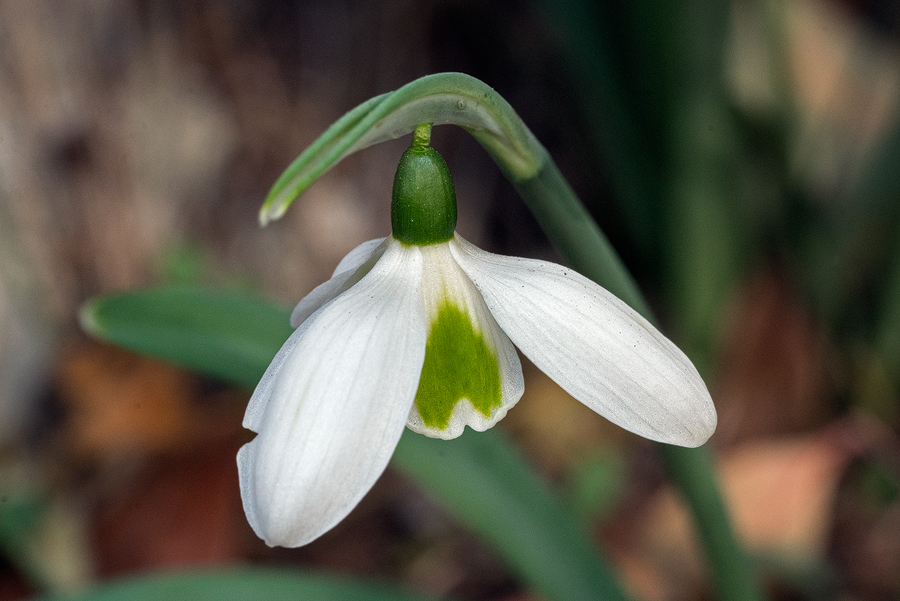
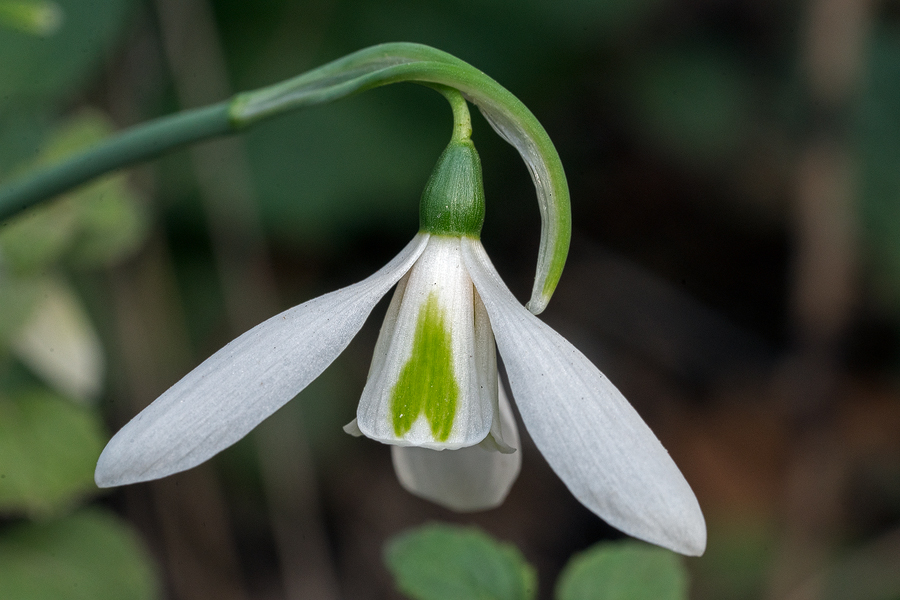
I have little experience of growing G. cilicicus but have not found it to be particularly easy to grow well. In the UK, it probably needs to be cultivated in pots in a cold glasshouse and given the hottest possible summer dormancy. Those who succeed with sessile Trillium species from the southern USA would probably do well with it and, I speculate, it would probably do better outdoors in many American gardens in parts of that country with hot summers and relatively mild winters.
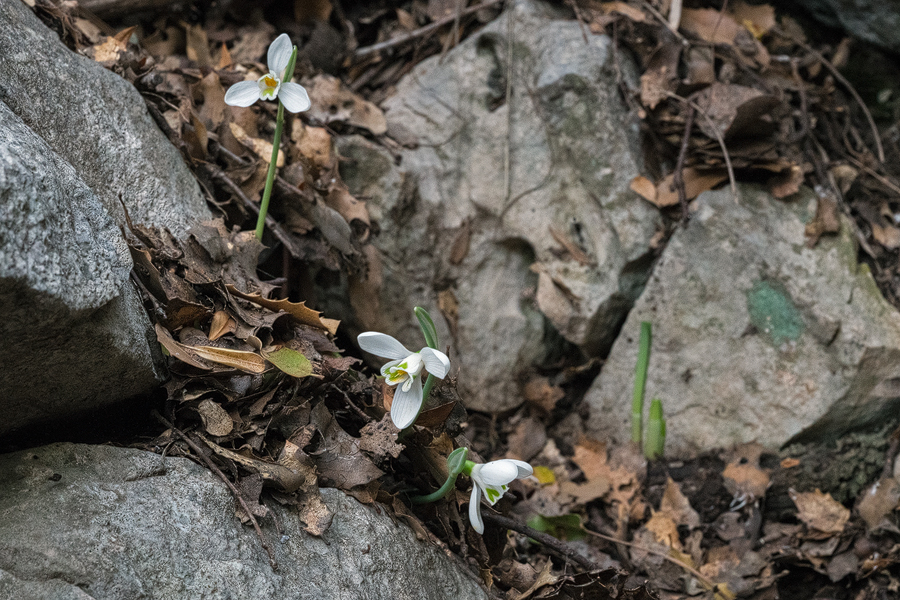
Until now, this species has attracted little attention from galanthophiles and, to my knowledge, there are no named cultivars of G. cilicicus. Based on my new familiarity with the variation in wild populations, I commend this snowdrop to all galanthophiles as both exquisitely beautiful and extraordinarily variable.
* Yüzbaşioğlu, I.S. et al. (2013) Some notes on Galanthus cilicicus and Galanthus peshmenii (Amaryllidaceae). Biological Diversity and Conservation. 6/1: 153-160
**Rønsted, Nina, et al. (2013) Snowdrops falling slowly into place: an improved phylogeny for Galanthus (Amaryllidaceae). Molecular Phylogenetics and Evolution 69: 205–217.
